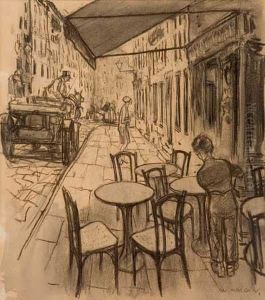Wallace Morgan Paintings
Wallace Morgan was an American illustrator and artist, born in 1873 in Albany, New York. He is most recognized for his work during the early 20th century. Morgan's illustrations were characterized by their dynamic expression and were often featured in periodicals, books, and posters during his time.
Morgan developed an interest in art at an early age and pursued his passion by studying at the Art Students League in New York City. His education there allowed him to refine his skills and techniques, which later played a significant role in his success as an illustrator. After completing his studies, he quickly garnered attention for his ability to capture moments with a sense of immediacy and vitality.
Throughout his career, Wallace Morgan was known for his versatility, working on a wide range of projects from advertising to editorial illustrations. He contributed to popular magazines of the era, such as 'Harper's Magazine' and 'Scribner's Magazine', and his work was often sought after by publishers and commercial enterprises. His illustrations often depicted scenes of adventure, historical events, and everyday life, resonating with the American public.
During World War I, Morgan served as an official artist for the United States Army. In this role, he documented the experiences of American soldiers in the war, providing a visual account that complemented the written histories of the time. His war illustrations are particularly noted for their detail and the sense of action they convey.
Morgan’s contribution to the field of illustration was significant during his lifetime, and his works continue to be studied and appreciated for their historical and artistic value. Despite the changes in artistic trends over the decades, his illustrations remain a testament to the skill and creativity of early 20th-century American illustrators. Wallace Morgan passed away in 1948, leaving behind a legacy as one of the prominent illustrators of his time.




